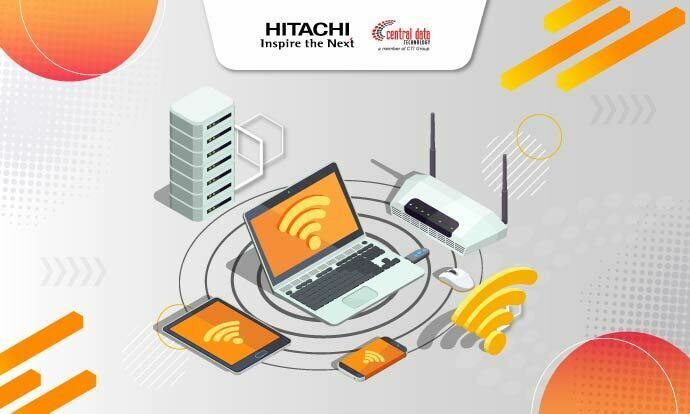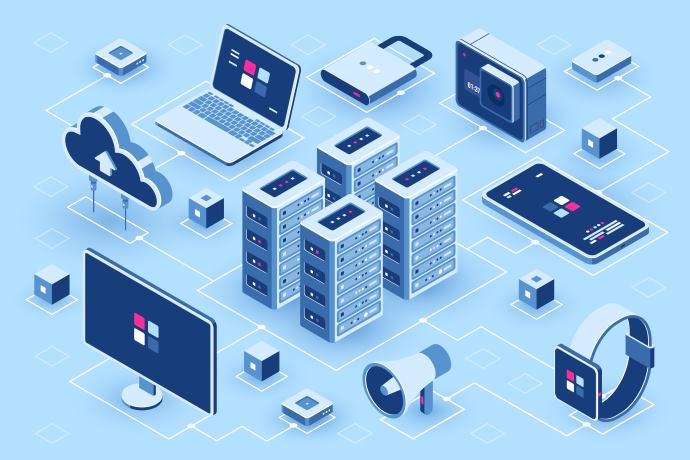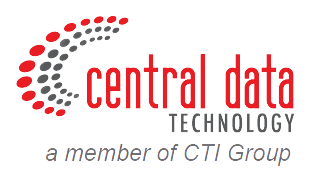
Have you ever struggled with the complexity of IT infrastructure management? Perhaps you’ve had to manage the functions of each IT infrastructure independently, leading to weeks or even months of work to release a new application. If this sounds familiar, it’s a sign that your IT infrastructure needs modernization. One effective modernization strategy is to implement Hyperconverged Infrastructure (HCI).
HCI centralizes IT resources and management, promising simplified, high-performance IT infrastructure at a lower cost. Notably, an increasing number of companies are transitioning to HCI. According to Allied Market Research Findings, the HCI market share was valued at US$3.85 million in 2018, and it’s projected to reach US$33.16 million by 2026, with a Compound Annual Growth Rate (CAGR) of 30.7 percent from 2019 to 2026.
The application of HCI technology can be the ideal solution for streamlining all IT infrastructure matters, particularly given the substantial potential HCI offers. Before delving into the advantages of HCI, it’s essential to understand what HCI is, which will be covered in the following article.
What is HCI?

If you’re wondering about HCI, here’s a comprehensive explanation: HCI is an IT framework that combines computing, storage, and networking into a single platform, making management more straightforward. HCI systems are designed for flexibility and scalability, and they can be deployed on-premises or in the cloud.
In an HCI system, all components are managed and configured through a single interface, simplifying overall management. HCI is often implemented in private cloud environments and provides a more cost-effective and user-friendly alternative to traditional IT infrastructure.
What Are the Benefits of HCI for Business?
HCI offers streamlined IT infrastructure management along with various benefits. Here are some of them:
1. Increased IT Efficiency
HCI can eliminate manual processes and reduce the need for extensive IT personnel. When implementing HCI, only one team is required to monitor and manage the entire IT infrastructure. Additionally, the IT team can effectively manage storage requirements, including capacity and workload distribution, for improved efficiency. All IT resources are automatically managed, reducing complexity.
2. Reduced Capital Expenditure (CAPEX)
Through HCI, businesses can lower CAPEX by reducing the demand for expensive, custom network infrastructure. HCI allows scalable architecture adjustments to match specific needs, resulting in reduced IT infrastructure expenses.
3. Greater Responsiveness
HCI facilitates quick scalability by adding more nodes to storage. This responsiveness makes implementing changes and upgrades easier, with a thanks to high-performance, easily scalable IT infrastructure.

Hitachi HCI for Smarter IT Modernization
Having gained insight into HCI and its benefits, it’s time to consider a solution for implementing HCI in your IT environment. In this context, Hitachi Hyperconverged Infrastructure emerges as an ideal choice. Supported by VMware Tanzu, Hitachi HCI simplifies operations, reduces costs, and accelerates product releases.
Hitachi HCI can modernize IT infrastructure, data centers, and drive cloud transformation through several integrated hyperconverged features:
1. Integrated Turnkey Appliance Powered by VMware vSAN
Accelerate production time, allowing more focus on innovation, not just infrastructure.
2. Firmware Automatic Upgrade
Non-disruptive upgrades across the entire HCI stack, including network switches.
3. Faster Provisioning
Speed up production with up to 80 percent provisioning and automation of manual steps.
4. Enterprise-Class Data Protection
Native and optimized data protection for uninterrupted operations.
5. Seamless Extensibility to SAN
Maximize storage investments with seamless workload mobility between HCI and SAN.
6. Easier Administration
Single-point support for the entire HCI stack, encompassing hardware, software, and virtualization.
What Can Hitachi HCI Do?
Hitachi HCI offers numerous advantages that enhance business efficiency and agility in IT infrastructure management:
1. Improved Performance
Maximize revenue opportunities with enhanced service levels for demanding applications. This solution improves performance, offering low latency with Nonvolatile Memory Express (NVMe) Solid State Disks (SSDs).
2. Increased IT Speed
The Hitachi Unified Compute Platform system automates operations with policies that expedite service provisioning.
3. Simplified Deployment
Easily expand capacity with a drag-and-drop approach and automatic load balancing across clusters.
4. Technical Continuity
Eliminate infrastructure ‘silos’ by seamlessly integrating with the VMware environment, maximizing investments. VMware management tools can be used for operating your virtual data center.
5. Downtime Prevention
Hitachi HCI combines Software-Defined Data Center (SDCC) elements with hyperconverged systems for continuous data access and prevention of downtime due to human activity.
6. Streamlined Management
Hitachi HCI provides simplified management tools, including virtual machine provisioning, health analysis, workload orchestration, and utilization monitoring, all accessible from a single screen.
7. Enhanced Data Storage Efficiency
Hitachi HCI ensures data efficiency without compromising performance, utilizing policy-based management to guarantee Quality of Service and eliminate resource overprovisioning.
Learn More: Modern Data Infrastructure – An Offensive Solution Against the Escalating Ransomware Threat
Hitachi as CDT Principal
As a Central Data Technology (CDT) principal, Hitachi offers solutions that simplify and automate your operational infrastructure, accelerating your business with agile, flexible, and highly scalable options.
CDT’s team of experienced and certified IT professionals will guide you through every step of adopting Hitachi Vantara, from consultation and deployment to ongoing support, avoiding the trial and error process.
Interested in Hitachi Vantara? Contact us by filling out the following form.
Author: Jeko Iqbal Reza / Translation: Ary Adianto
Content Writers CTI Group

